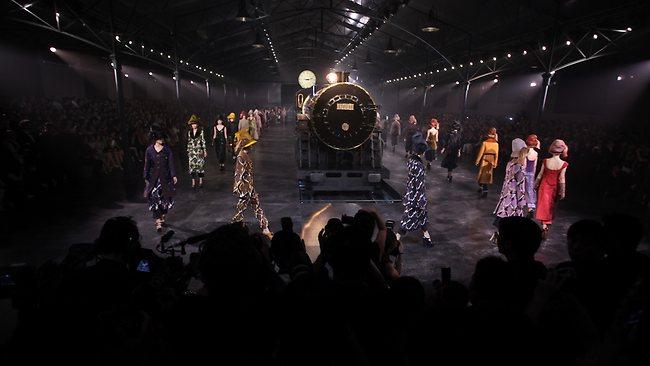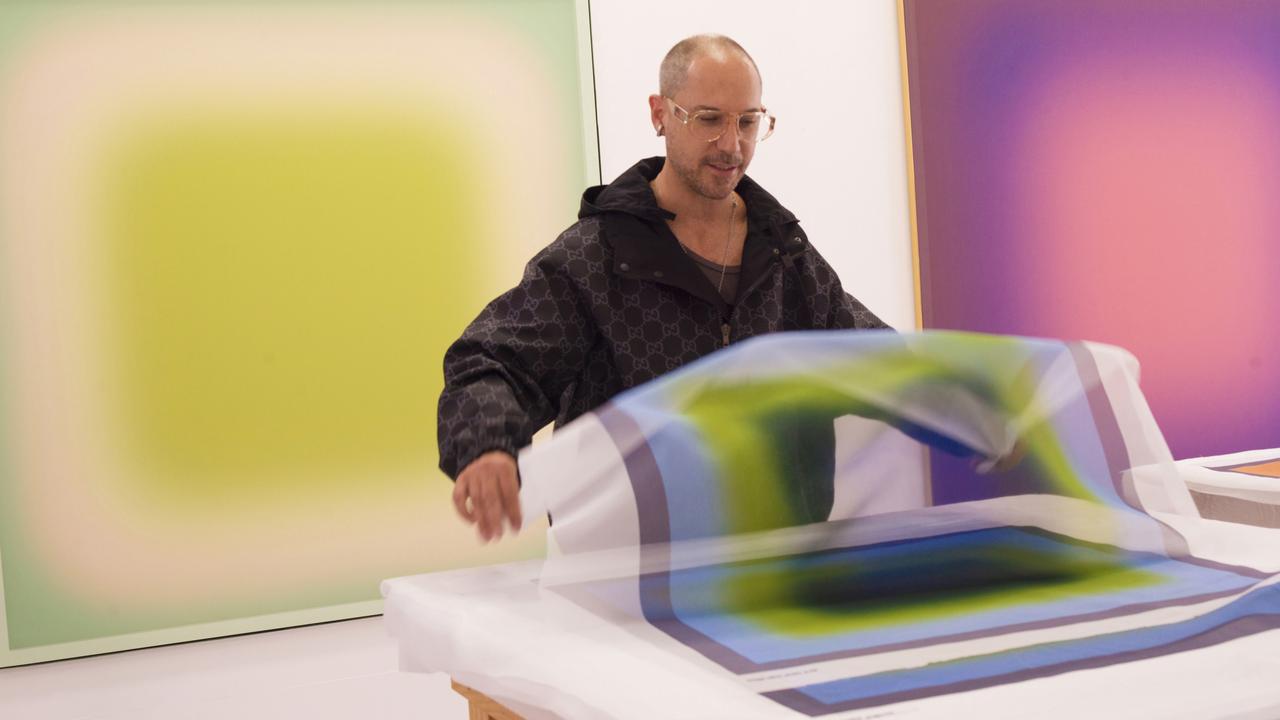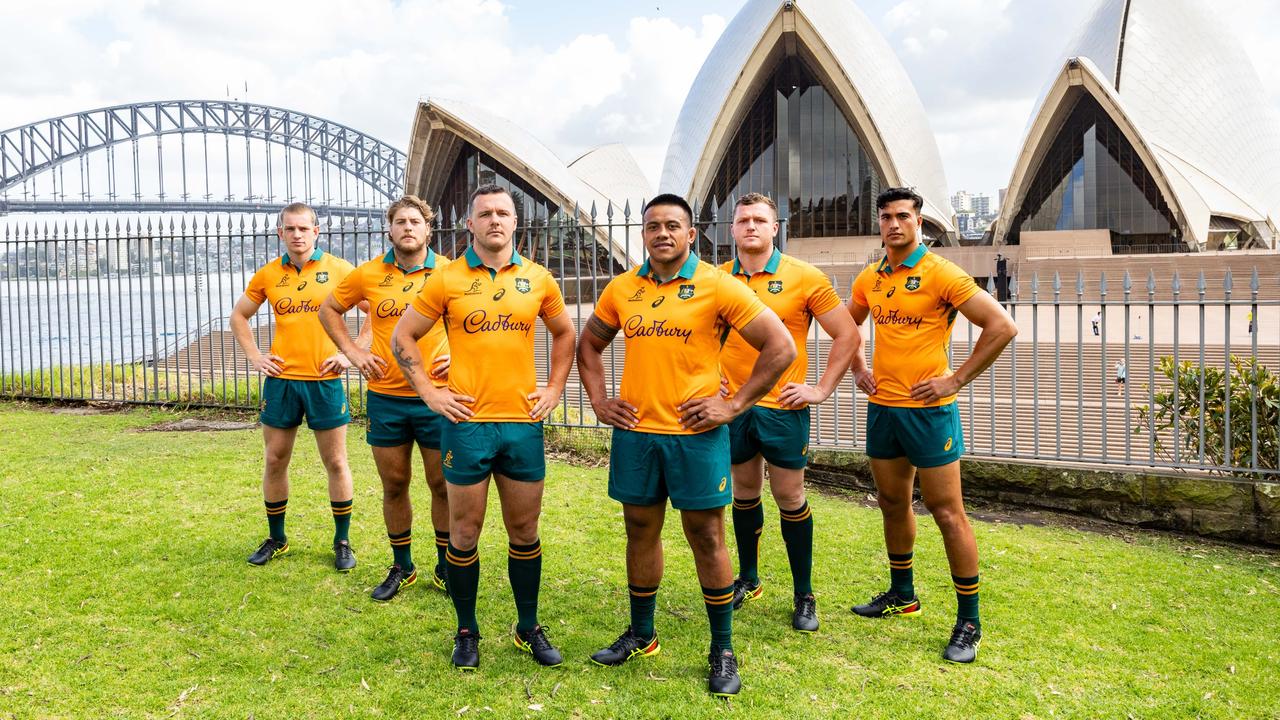Full steam ahead for Louis Vuitton in China
LOUIS Vuitton is consolidating its hold on the Chinese luxury market, as evidenced by its latest lavish runway show and brand-new Shanghai "maison".

On the 85th floor of the Park Hyatt in Shanghai, Marc Jacobs is demonstrating the determination of luxury giant Louis Vuitton to better understand China. Not long after the sun has risen through the smog-filled sky, the designer responsible for putting the former leathergoods company on the fashion map is attempting to complete a series of soothing tai chi exercises.
After a gentle bow, Jacobs and his buff workout partners are in the lift heading to his suite, having barely raised a sweat. "It's supposed to be relaxing," Jacobs says.
"I'm used to a more intense workout." That night his preference for intensity over subtlety is demonstrated with a lavish recreation of his breathtaking Paris Autumn/ Winter show on Shanghai's Bund along the Huangpu River. The deafening applause from the Chinese press and VIPS shows that he doesn't need tai chi to understand China and its appetite for luxury.
The heavy, embellished coats worn over narrow pants and soaring Stephen Jones hats are a challenging fashion statement from Jacobs, but the element of performance, the custom-made steam train that transported the models into the specially constructed tent and the gathering of celebrities, including pop singer Lana Del Rey, television presenter Alexa Chung and Chinese actress Fan Bingbing, are a strong and timely reminder of Louis Vuitton's carefully cultivated luxury credentials.
"It was different when we arrived in China," says Yves Carcelle, the exiting chief executive of Louis Vuitton who has presided over his company's penetration of the Asian market and watched as consumers went from wearing Mao collars to logo-emblazoned cashmere scarves. "Quite a few of our competitors thought we were mad. I remember one telling me it would take a generation for a Chinese luxury customer to evolve. But if you visited regularly back then, it soon became obvious that the country was changing every six months. In fact, it's evolved with astonishing speed. What would take 20 years in the West happens here in two to five years."
Louis Vuitton was among the first luxury companies to negotiate its way through red tape to establish a presence in China, opening at the Palace Hotel in Beijing in 1992. "The only way we could reach potential customers was by liaising with luxury car brands," Carcelle says. "It was a case of contacting clients literally one by one."
Since then fashion magazines have flooded the market. The Chinese edition of Vogue, launched in 2005 with Australian supermodel Gemma Ward on the cover, regularly outweighs its US counterpart, thanks to pages and pages of advertising from Louis Vuitton and its competitors. It publishes 16 editions a year compared with the traditional 12 to meet consumer demand. "It's a fight to find space for stores, and a fight to find enough space in magazines," Carcelle says. With 41 stores in China, Louis Vuitton no longer has to talk to car dealers but it has paved the way for strong competition. Gucci operates 42 stores in China; Burberry has 59.
The lavish Shanghai production shows there's plenty of fight left in Louis Vuitton, which was founded in 1853.
The runway show was merely an opening feint: the new maison in Nanjing Road's Plaza 66 delivered the knockout blow. Even with Chanel, Prada and Celine stores nearby, the four-level flagship emerges as the uncontested temple to capitalist chic in the Paris of the East.
At present there are only 16 maisons in the world (Sydney's opened last year), where an emphasis is placed on the company's ability to customise products. "Being in this made-to-order market needs sophisticated customers who know what they are talking about and own several bags, if not dozens of bags," Carcelle says. "That's why the haute maroquinerie [which translates literally to high leather goods] and made-to-order shoes are important to demonstrate in China."
Sprawling across four levels with more than 100 staff, the Shanghai maison was designed by architect Peter Marino.
"The goal when I do a store like this is that when I'm in here I ask whether this could be any other brand," Marino says. "The answer has to be no." The unique Shanghai flavour begins with the building's facade of interlocking steel and glass white flowers, which closely resemble the Louis Vuitton monogram and were inspired by the wood screens that filter light in traditional Chinese gardens. At night the mesh is illuminated, transforming the building into a lighthouse guiding weary shoppers to the safety of plush surroundings. Terraces interrupt the smooth facade with fern pine trees adding a rare glimpse of nature in the urban jungle. "What's new, really new about this building, is that it's much, much lighter," Marino says. "I think it closely reflects what Marc Jacobs brings to Louis Vuitton."
Beneath a marble staircase that would not look out of place in the Vatican Museum, a polished metal sculpture by Chinese artist Qiu Zhijie called Three Pools Mirroring the Moon, inspired by the West Lake in Hangzhou, adds to the local flavour. Sculptures by Teresita Fernandez and Gao Weigang, and patchwork furniture pieces by Paul Evans stimulate the eye, along with the sea of handbags, suits, dresses and sunglasses.
"I think what Peter has done with this maison is quite staggering," says Christopher Zanardi-Landi, executive vice-president of Louis Vuitton. "It's a big space but he has broken it up into rooms, with their own themes. It's definitely Louis Vuitton." When I meet with Zanardi-Landi, the former head of Louis Vuitton in China, he is holding court in the store's invitation-only penthouse apartment, which is a sanctuary for clients who prefer to shop away from the madding crowds. Zanardi-Landi diplomatically declines to reveal whether the Shanghai maison is larger than its Champs Elysees equivalent.
"They have a very different feeling," he says.
That diplomacy extends to discussions about the economy. Before the opening of the Shanghai maison the papers have been flooded with reports of the slowing down of the Chinese economy and a softening in appetite for luxury goods. Burberry said its sales had been hit by the slowdown. "We're probably more concerned about the speed of the explosion than anything else," Zanardi-Landi says. "We think we've just started. Ten years ago, Chinese customers were not so sophisticated and very logo-driven.
Now they are very knowledgeable. Chinese purchasing of Louis Vuitton is still super strong." Even with the company reporting strong double-digit growth with the Chinese, according to Zanardi-Landi, the Shanghai maison marks a shift in strategy from expansion to consolidation. "We will slowly continue to grow. We are continuously improving what we have and bringing newness to what we do."
In China, most Louis Vuitton stores are in the capitals of provinces. The emphasis now is on improving service and guiding Chinese customers through different stages of familiarity with the brand. Having shadowed Carcelle for months, incoming chief executive Jordi Constans, a Spaniard and former managing director of yoghurt company Danone, now knows those stages well. "There are three," Constans says. "The new customers, whose first purchase is the monogram. The next step is to buy the ready-to-wear, the jewellery or the plain handbags.
Then there's the most sophisticated of all, the customer who appreciates the logo, not as an obvious outward sign of expense, but because of its history and glamour."
At the runway show, history and glamour intertwine.
The steam train evokes Louis Vuitton's beginnings supplying luggage to worldly travellers while the glamour comes from the brocades, jacquards, laser-etched plastic stones and kangaroo leather in the collection. "Travel has always been the inspiration of Louis Vuitton," Carcelle says. "When Marc Jacobs decided to show a real train arriving at the Louvre for the Fall/Winter 2012-13 show, it paid tribute to the world of travel in a most elegant way."
Photographer Todd Selby from influential lifestyle website theselby.com was enlisted to capture the spirit of travel on a two-week train journey from Paris to Shanghai; at the cocktail reception before the runway show, guests were shown the perfect way to stuff your Louis Vuitton carry-all or overnight bag. People may no longer travel by train with a trail of monogrammed trunks but the company is betting that people will buy into the dream.
"Luxury should be an emotion," Carcelle says. Having taken his bow to deafening applause, Jacobs' wide smile suggests he is experiencing an emotion best described as elation and the kind of buzz that doesn't come from tai chi.
With the crowd tearing up the dancefloor once the DJs flown in from Paris hit their Europop stride, and Carcelle waving his hands in the air, it's clear Louis Vuitton is prepared to sweat to continue to reign in China.


